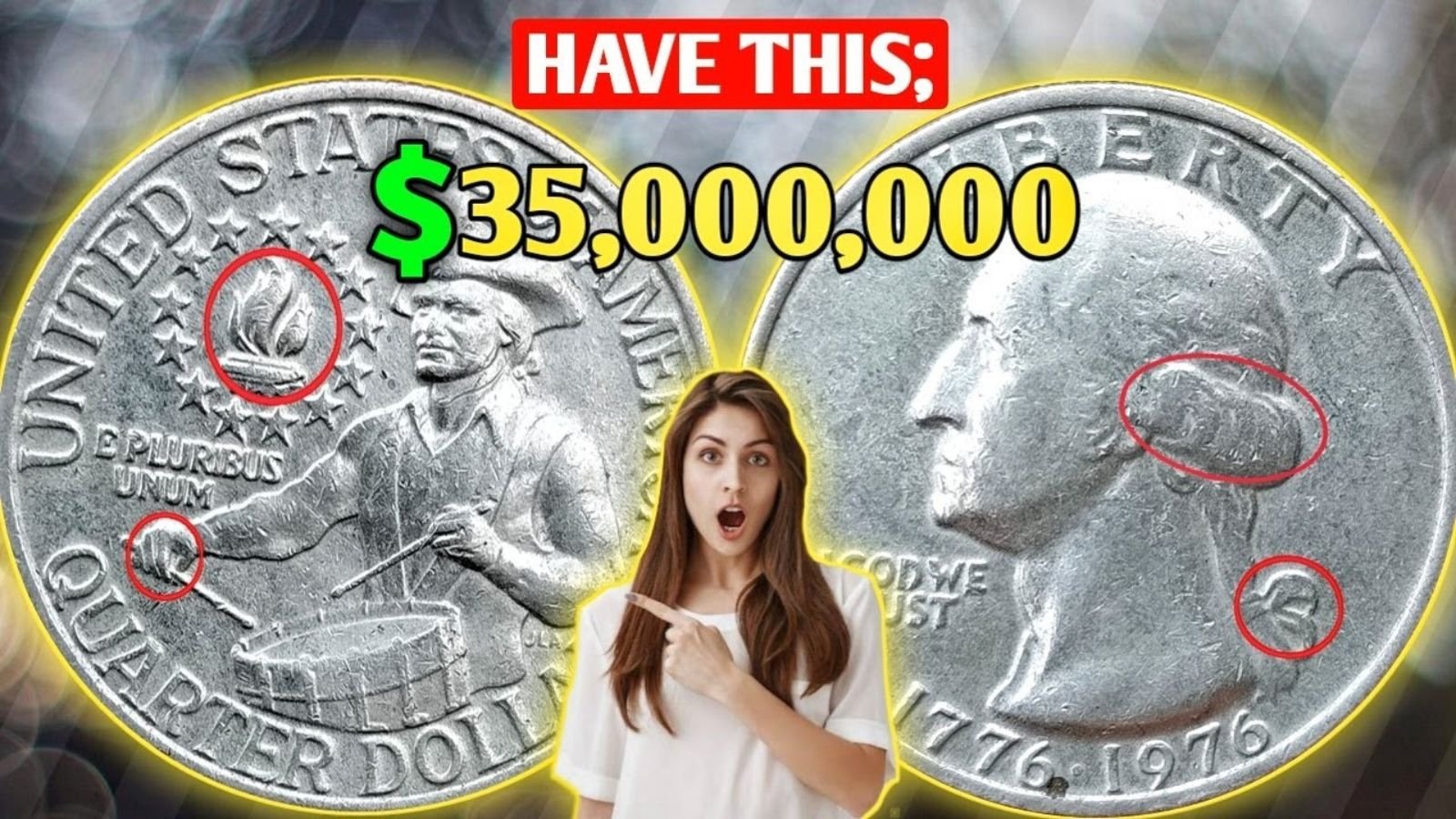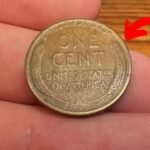Among modern collectible coins, few pieces stir as much excitement as the Valuable 1976 Bicentennial Quarter. What started as a celebration of America’s 200th birthday has evolved into a goldmine for collectors—especially those who understand the nuances of mint marks, error types, silver content, and proof grades. Some of these quarters are now worth thousands, with rare examples even rumored to be valued up to $35 million.
In this detailed guide, we’ll explore everything you need to know—from the quarter’s rich history to identifying the most sought-after variations.
Quick Reference Table: Valuable 1976 Bicentennial Quarter Varieties
| Type | Mint Mark | Metal Composition | Common Value | Error/High-Grade Value |
|---|---|---|---|---|
| Clad Circulation Strike | None (P) | Copper-Nickel Clad | $0.25 – $1.50 | $100 – $500+ (MS65+) |
| Clad Circulation Strike | D (Denver) | Copper-Nickel Clad | $0.25 – $1.50 | $150 – $1,000+ (errors) |
| Clad Proof Strike | S (San Fran) | Copper-Nickel Clad | $1 – $5 | $50 – $150 (PR70DCAM) |
| 40% Silver Uncirculated | S (San Fran) | 40% Silver | $8 – $12 | $100 – $500+ (MS69) |
| 40% Silver Proof | S (San Fran) | 40% Silver | $10 – $18 | $150 – $1,200 (PR70DCAM) |
| Error Coins (all mints) | Any | Varies | $250 – $5,000+ | Up to $35 million (rumored) |
Historical Background of the Bicentennial Quarter
In 1976, the U.S. Mint introduced commemorative coinage to celebrate 200 years of American independence. This included unique designs for the quarter, half dollar, and dollar coins. The Bicentennial Quarter, officially dated 1776–1976, was released into circulation starting in 1975 and was the first major design deviation since the Washington quarter’s inception in 1932.
This historical coin wasn’t just a tribute—it was a signal of innovation, patriotism, and collector excitement. Over 1.6 billion Bicentennial Quarters were struck across various mint locations, ensuring that almost every American had a piece of the celebration in their pocket.
Design Features That Define the Bicentennial Quarter
One of the most distinct aspects of the Valuable 1976 Bicentennial Quarter is its reverse design.
Obverse (Front):
- Features the classic profile of George Washington.
- Dual date 1776–1976 replaces the standard single-year date.
- Inscriptions: LIBERTY and IN GOD WE TRUST.
Reverse (Back):
- Designed by Jack L. Ahr, winner of a national competition.
- Depicts a Colonial drummer with a torch and 13 stars.
- Inscriptions: UNITED STATES OF AMERICA, E PLURIBUS UNUM, and QUARTER DOLLAR.
This was the first time in U.S. history that the quarter underwent a temporary redesign—a feature that instantly made it collectible.
Mint Marks and Rarity Explained
Mint marks play a huge role in determining whether you have a Valuable 1976 Bicentennial Quarter.
Key Mint Locations:
- Philadelphia (No Mint Mark) – Standard circulation clad coins.
- Denver (“D”) – Clad circulation coins, some with errors.
- San Francisco (“S”) – Clad and silver proof sets for collectors.
Rarity Factors:
- 40% Silver Coins were only available in collector sets from the U.S. Mint and never released for general circulation.
- Proof coins struck in San Francisco were specially made for collectors and show incredible detail with frosted reliefs and mirrored backgrounds.
- Some San Francisco S-mint coins were mistakenly struck on wrong planchets or show doubling—making them highly desirable.
What Makes a 1976 Bicentennial Quarter Valuable?
Not all Bicentennial quarters are worth more than face value—but certain conditions, errors, and metal types can drastically increase their value.
Factors That Affect Value:
- Condition: Coins graded MS65+ or PR70DCAM can sell for hundreds or even thousands.
- Composition: 40% silver coins are worth far more than clad versions.
- Rarity of Errors: Coins with minting errors, such as doubled dies or off-center strikes, can skyrocket in price.
- Low Population Grades: Fewer coins in perfect condition make them more desirable to collectors.
Most Valuable 1976 Bicentennial Quarter Error Coins
Certain error coins from the 1976 series are among the most sought-after and command extremely high premiums.
Top Error Types to Watch For:
- Double Die Obverse (DDO)
Doubling on “IN GOD WE TRUST” or Washington’s features. Value: $500 – $3,000+ - Off-Center Strikes
Coins struck off-center by 5–15%. Value: $150 – $700+ - Wrong Planchet Strikes
Quarters struck on nickel, dime, or foreign blanks. Value: $1,000 – $5,000+ - Clipped Planchet
Appears as if a “bite” was taken out of the coin. Value: $100 – $600+ - Experimental Errors (Silver on Clad Dies)
Rare silver coins struck using clad dies—unconfirmed but highly rumored. Value: Up to $35 million (speculative)
Circulated vs. Uncirculated vs. Proof: What’s the Difference?
| Grade Type | Description | Typical Value Range |
|---|---|---|
| Circulated | Shows wear; used in commerce | $0.25 – $1.50 |
| Uncirculated (MS) | No signs of wear; from Mint sets or rolls | $5 – $150 (MS65+) |
| Proof (PR) | Mirror-like finish; made for collectors only | $8 – $1,200 (PR70DCAM) |
| Error Coin | Flaws like doubling, off-center, or planchet errors | $100 – $5,000+ |
Collector Tips: How to Identify a Valuable 1976 Bicentennial Quarter
Want to know if you’re sitting on a hidden treasure? Follow these collector-approved steps:
- Use a 10x loupe to examine the date, lettering, and edge.
- Weigh the coin – 40% silver quarters weigh 5.75g vs. 5.67g for clad.
- Check for a copper stripe on the edge. No stripe = silver coin.
- Submit suspicious coins to PCGS or NGC for professional grading.
- Look for frosted reliefs and mirror finishes in proof coins.
Buying and Selling: Where to Trade Valuable 1976 Bicentennial Quarters
Whether you’re buying or selling, make sure to navigate the market wisely.
Where to Buy:
- eBay and Etsy – Good for variety but beware of counterfeits.
- Heritage Auctions – Trusted source for high-grade coins.
- Local Coin Shops – Ideal for in-person appraisals and purchases.
- U.S. Mint Sets – Sometimes still available in sealed condition online.
Where to Sell:
- Online Auctions – eBay, Heritage, and GreatCollections.
- Coin Shows and Conventions – Meet serious buyers and experts.
- Certified Dealers – Especially for high-grade or error coins.
Selling Tips:
- Get your coin graded by PCGS or NGC—it boosts buyer confidence.
- List with detailed photos showing both sides and any notable features.
- Mention weight and metal content, especially for silver versions.
- Describe any visible errors, including doubling or misalignment.
Final Thoughts: Is the 1976 Bicentennial Quarter in Your Pocket Worth a Fortune?
The Valuable 1976 Bicentennial Quarter isn’t just another coin—it’s a hidden gem that could be worth anywhere from 25 cents to over $35 million, depending on condition, minting errors, and composition. Whether you’re a seasoned collector or a curious novice, now is the time to check your coin stash.
With a bit of knowledge and a sharp eye, you might just discover your own slice of American history—and wealth.
Some Important Link
| Telegram Group | Click Here |
| WhatsApp Group | Click Here |
| Home Page | Click Here |










